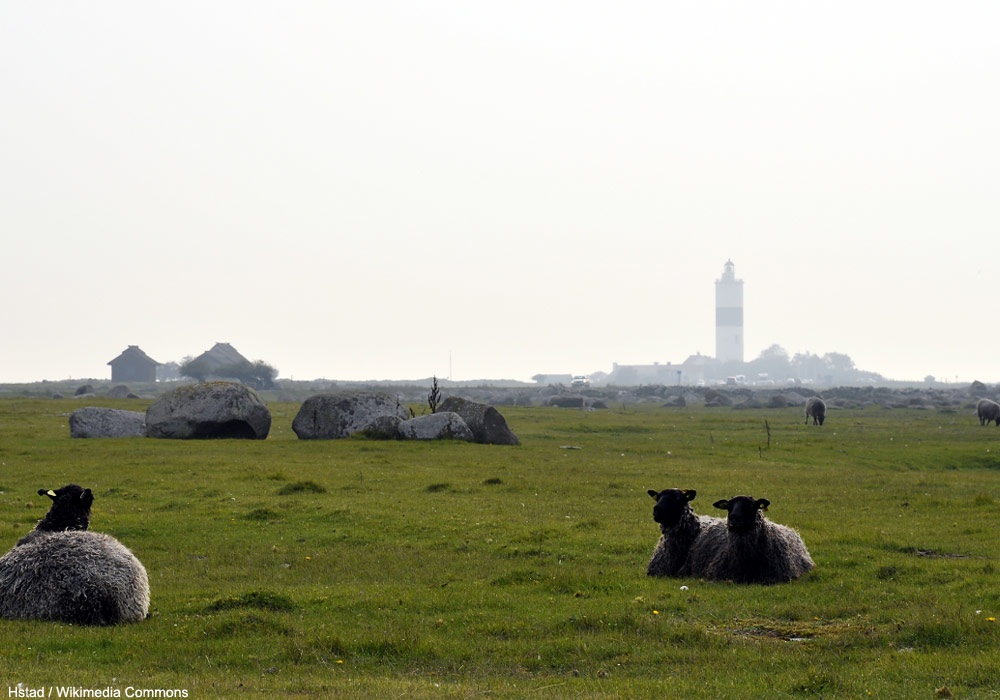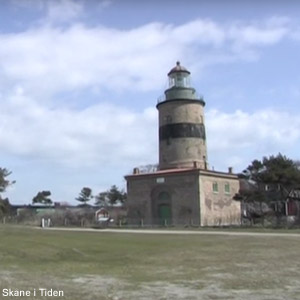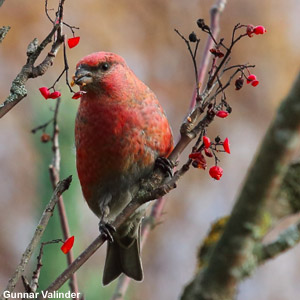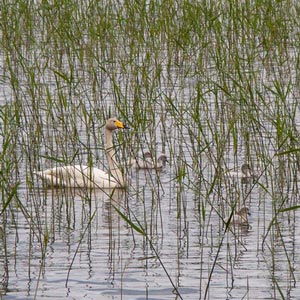Magazine | Voyages
Observer les oiseaux sur Öland (Suède), l’île du soleil et des vents

Vue du phare de Långe Jan, situé près d’Ottenby, à l’extrémité sud de l’île d’Öland. Avec la réserve voisine, c’est l’un des meilleurs sites de Suède pour observer les oiseaux migrateurs, et des raretés y sont trouvées chaque année.
Photographie : Hstad
Introduction
Öland est la seconde plus grande île de Suède (137 km de long et 4 à 15 km de large) après Gotland. Elle est située dans le comté de Kalmar, dans le sud-est du pays. C’est une destination estivale très prisée des familles suédoises pour ses longues plages de sable et son climat ensoleillé et doux (elle est surnommée « l’île du soleil et des vents »), mais c’est également un endroit apprécié des naturalistes grâce à la diversité de ses habitats, de sa flore et de sa faune. D’un point de vue ornithologique, Öland accueille un quart des oiseaux nicheurs du pays, et plus de 420 espèces y ont déjà été notées : d’ailleurs, l’une des principales stations suédoises de baguage a été installée à Ottenby, à l’extrémité sud de l’île.
Après un aperçu de l’avifaune en fonction des saisons, nous vous proposons une série de secteurs intéressants à visiter, puis nous vous proposons la version française du rapport d’un voyage guidé par Pav Johnsson (compagnie Avifauna Naturessor) dans le sud de l’île du 30 juillet au 4 août 2019, au cours duquel 143 espèces ont été observées, dont des raretés comme les Bécasseaux rousset (Tryngites subruficollis) et à croupion blanc (Calidris fuscicollis) et la Pie-grièche à poitrine rose (Lanius minor).
Abstract
Öland is the second largest Swedish island (137 km long and 4 to 15 km wide) after Gotland. It is located in the Kalmar County, in the south-east of the country. It is a very popular summer destination with Swedish families for its long sandy beaches and its sunny and mild climate (it is nicknamed « the island of the sun and the winds »), but it is also a place appreciated by naturalists thanks the diversity of its habitats, flora and fauna. From an ornithological point of view, Öland hosts a quarter of the country’s breeding birds, and more than 420 species have already been recorded there, and that’s why one of the main Swedish ringing stations has been installed in Ottenby, at the southern end of the island.
In this article, after an overview of the bird species visible according to seasons, we propose you a selection of some good birding spots, then we publish the French version of a trip report guided by Pav Johnsson (Avifauna Naturessor company) in the south of Öland rom the 30th of July to the 4th of August 2019, during which 143 species were recorded, including rarities such as the Buff-breasted Sandpiper (Tryngites subruficollis), the White-rumped Sandpiper (Calidris fuscicollis) and the Lesser Grey Shrike (Lanius minor).
Poursuivez la lecture de cet article, en vous abonnant dès maintenant !
Découvrez les Archives d’Ornithomedia.com
Pour seulement 10,00 €TTC/an (ou 6,00 € les 6 mois)
Profitez de plusieurs centaines d’articles en accès illimité et sans aucun engagement.
Compléments
Ouvrages recommandés
- RSPB Migration Hotspots: The World’s Best Bird Migration Sites de Tim Harris
- DVD « Watching Birds in Scandinavia – Migration, Breeding and Resting Areas in Norway, Sweden, Finland and Denmark »
- Carte de l’île d’Öland de Lantmateriet
À visiter
- Le site de la compagnie Avifauna Naturessor : https://avifauna.se
- Le site web de Pav Johnsson : https://pavjohnsson.se/
- Le site web VisitOland : https://visitoland.com
- Le site web de l’association Ölands Ornitologiska Förening : http://oof.nu/
- Le blog Fåglar på Öland : http://birdsinlandscape.blogspot.com/
- Le site web de la station ornithologique d’Ottenby : www.ottenby.se
Sources
- Pav Johnsson (2019). Öland : 30 juli – 4 augusti 2019. Birdlife Sverige. https://cdn.birdlife.se/wp-content/uploads/sites/34/2019/08/%C3%96land-jul-aug-2019.pdf
- Göran Andersson (2016). Birdwatching in Oland, Sweden. Bidwatching. www.birdwatching.co.uk/articles-2/2016/9/19/birdwatching-in-sweden
- Magnus Åhrén. Birding Southern Sweden. www.takern.se/Bilagor/Birding%20Southern%20Sweden.pdf
- VisitOland. 20 birding locations. https://visitoland.com/en/birding/20-birding-locations/







Aucun commentaire sur ce sujet
Participer à la discussion !